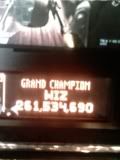Where did you see '5 Volts'?thewizdawg wrote:Anybody ever buy one of these?
http://www.overstock.com/Sports-Toys/Ga ... u=11961514
I'm looking for a 5 or 4.5 inch screen that has a better viewing angle than the PS1 and runs at 5 volts.
The screen I got comes with a 12v 800mA wall wart and a car cigarette lighter adapter.
(Seeing as I seem to have ruined my PS1 screen... I decided to give this one a look over)
The following is a list of pictures on my website showing the disassembly of the Galileo screen:
WARNING!!! IMAGES ARE HUGE (3072x2304 pixels)! NOT 56k FRIENDLY!!!
You've been warned!
http://www.oslb.net/Galileo/gedc0630.jpg" onclick="window.open(this.href);return false;
http://www.oslb.net/Galileo/gedc0631.jpg" onclick="window.open(this.href);return false;
http://www.oslb.net/Galileo/gedc0632.jpg" onclick="window.open(this.href);return false;
http://www.oslb.net/Galileo/gedc0633.jpg" onclick="window.open(this.href);return false;
http://www.oslb.net/Galileo/gedc0634.jpg" onclick="window.open(this.href);return false;
http://www.oslb.net/Galileo/gedc0635.jpg" onclick="window.open(this.href);return false;
http://www.oslb.net/Galileo/gedc0636.jpg" onclick="window.open(this.href);return false;
http://www.oslb.net/Galileo/gedc0637.jpg" onclick="window.open(this.href);return false;
http://www.oslb.net/Galileo/gedc0638.jpg" onclick="window.open(this.href);return false;
http://www.oslb.net/Galileo/gedc0639.jpg" onclick="window.open(this.href);return false;
http://www.oslb.net/Galileo/gedc0640.jpg" onclick="window.open(this.href);return false;
http://www.oslb.net/Galileo/gedc0641.jpg" onclick="window.open(this.href);return false;
http://www.oslb.net/Galileo/gedc0642.jpg" onclick="window.open(this.href);return false;
http://www.oslb.net/Galileo/gedc0643.jpg" onclick="window.open(this.href);return false;
http://www.oslb.net/Galileo/gedc0644.jpg" onclick="window.open(this.href);return false;
http://www.oslb.net/Galileo/gedc0645.jpg" onclick="window.open(this.href);return false;
http://www.oslb.net/Galileo/gedc0646.jpg" onclick="window.open(this.href);return false;
http://www.oslb.net/Galileo/gedc0647.jpg" onclick="window.open(this.href);return false;
http://www.oslb.net/Galileo/gedc0648.jpg" onclick="window.open(this.href);return false;
http://www.oslb.net/Galileo/gedc0649.jpg" onclick="window.open(this.href);return false;
http://www.oslb.net/Galileo/gedc0650.jpg" onclick="window.open(this.href);return false;
http://www.oslb.net/Galileo/gedc0651.jpg" onclick="window.open(this.href);return false;
http://www.oslb.net/Galileo/gedc0652.jpg" onclick="window.open(this.href);return false;
http://www.oslb.net/Galileo/gedc0653.jpg" onclick="window.open(this.href);return false;
http://www.oslb.net/Galileo/gedc0654.jpg" onclick="window.open(this.href);return false;
http://www.oslb.net/Galileo/gedc0655.jpg" onclick="window.open(this.href);return false;
Sorry for the blurry images... my 7MP camera does not like my unsteady hands.
The LCD itself is a bit thicker than I'd hoped (about a quarter inch)... but that's ok for my project... might cause issues for others. I really liked the longish ribbon cable connecting the LCD and video board... makes it much easier to re-route as needed.
There are brightness and contrast controls built into the video board with nice right-angle tact switches.
The video board is almost entirely through-hole pcb construction (the lone exception appears to be a voltage regulator IC), which should make this board hackable by even most novices.
As an extra treat all the components have their value silkscreened next to them.
The main IC on the video board is a Philips OM8361 (datasheet: http://www.datasheetarchive.com/OM8361-datasheet.html" onclick="window.open(this.href);return false; ). Edit 1/1/2010: Note: this appears to be the same chip with a different pinout/form factor: http://www.audiolabga.com/pdf/TDA8362.pdf" onclick="window.open(this.href);return false;
The second chip appears to be a Microchip part (as in PIC)... it read "CF745 -04/P". Edit 1/1/2010: I found the datasheet for this chip, I was right... it is a Microchip part (PIC16C5X to be exact). Datasheet here: http://pdf1.alldatasheet.com/datasheet- ... CF745.html" onclick="window.open(this.href);return false;
The LCD itself is a Sharp "DUNTK2655TPZZ"... I can't find a datasheet for it.
There are two ICs on the board: "LZ9GF29" and "IR3Y26A"... only the latter of which I can find a "datasheet" for (it's not even a real datasheet).
Edit 1/1/2010: IR3Y26A Datasheet: http://pdf1.alldatasheet.com/datasheet- ... 3Y26A.html" onclick="window.open(this.href);return false;
The LCD does use a CCFL tube... but it looks like it'll be fairly easy to do the LED mod on.
Amusingly enough... the unit I got has the fuse on the CCFL circuit bypassed with a tiny piece of wire. Probably the reason for the refurb status.
Overall... I'd say this unit should be very easy to mod and use in handhelds... however the unexpected thickness of the LCD, the fact that the face of the LCD is glass (not plastic), and the power consumption of this beast, may put off many of our fellow modders.
Enjoy.
Jason

